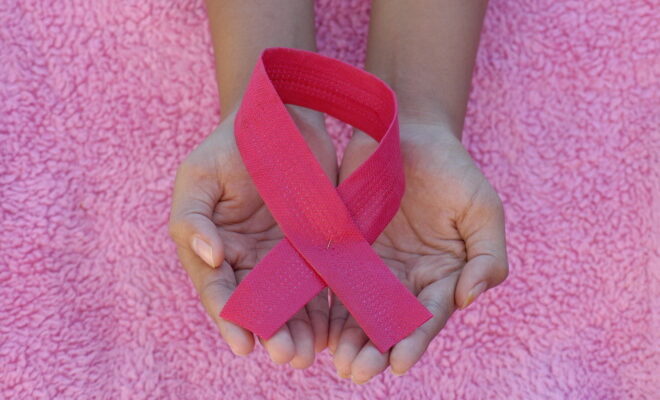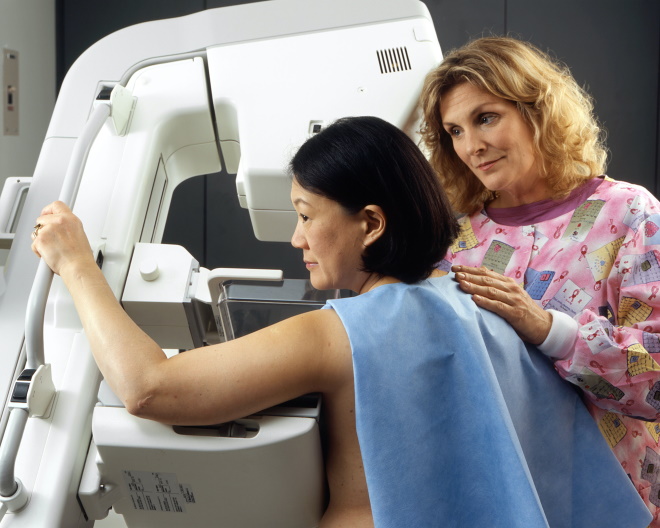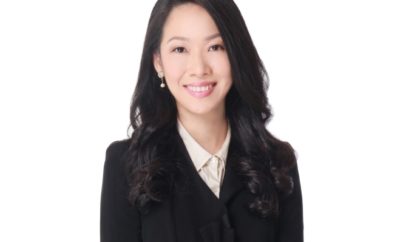
Health x Wellness
A healthy lifestyle can reduce your risk of developing breast cancer
Earlier diagnosis and improvements in breast cancer treatment are resulting in the majority of women surviving a breast cancer diagnosis.
The Singapore Cancer Registry shared that 2,000 women are diagnosed with breast cancer each year. Breast cancer was the leading cause of death by cancer amongst Singaporean women.
It’s important for women to understand that all women are at risk of developing breast cancer. Age is a key factor in this equation. Equally important to note, is early detection and subsequent treatment can help save lives. Detecting breast cancer early allows for treatment at earlier stages of the cancer, and can improve the odds of survival.
We discuss breast cancer, hereditary cancers and mutations, as well as how to think about using healthy lifestyle options to reduce the risk of developing the condition with Dr. Jendana Chanyaputhipong from PanAsia Surgery.
the Active Age (AA): Is breast cancer an inheritable condition? And if not, is there a type or condition that encourages the condition to occur?
Dr. Jendana Chanyaputhipong (JC): Gene mutation is an essential aspect of cancer development, but cancer does not usually develop from a single gene mutation alone. When the DNA damage occurs, cells usually have a way of dealing with their damaged DNA. Sometimes the damage is repaired; other times the damaged cell removed. However, some DNA damage escapes these mechanisms and gene mutations build up in cells. Overtime, cancer develops. These mutations can be acquired in a person’s lifetime or inherited from their parents.
There are 2 types of Gene Mutations. Acquired mutations are gene damage/mutations that occur after a person is born. The damage is due to “wear and tear” from various causes over time. Aging, exposure to certain viruses, hormones and environmental toxins such as cigarettes and alcohol can cause cell damage that leads to gene mutations and cancer.
(The other type is) inherited/hereditary mutations. This means the person is already born with a mutated gene that was passed down from a parent. As we know, most genes come in pairs. A person inherits one copy of each gene from their mother and one copy from their father. A person with inherited mutations are born with one already damaged gene in all of the cells in their body. Though an inherited gene mutation does not always cause cancer, lesser damage is needed for their cells to become cancerous. Therefore, this proportion of women are at an elevated risk of developing breast cancer.
In breast cancer, up to 90 percent of all breast cancer cases are sporadic, meaning it occurs in otherwise normal individual who does not have an inherited mutation.
Only 5-10 percent of breast cancer cases are hereditary cancers. With hereditary cancers, the first mutation is inherited at birth; subsequent mutations build up over time eventually resulting in development of cancer. At present, we do not yet have a complete knowledge of all the factors that result in the development and growth of the various types of breast cancer.
We do know that breast cancer occurs as a result of complex interactions between gene mutations in breast cells, as well as lifestyle and reproductive (hormonal) risk factors.
Not all risk factors carry the same weight.
The 2 main risk factors include being a woman and getting older. Some women will get breast cancer even without any other risk factors that they know of.
The other factors associated with an increased breast cancer risk are:
- Having family history
- Prior exposure to radiation therapy to the chest at young age
- Having previous high risk benign breast conditions that are predictors of possible future cancer development (such as atypical hyperplasia or lobular carcinoma in situ)
- Having prolonged or increased exposure to female hormone oestrogen due to obesity
- Use of hormonal contraceptives or hormone replacement therapy
- Not having children
- Lifestyle factors such as smoking, alcohol and living a sedentary lifestyle lacking in physical activity.
AA: Is breast cancer fatal?
JC: Breast cancer can kill. In Singapore, breast cancer is the number one cause of cancer-related deaths in women.
The outcome is influenced by the cancer stage at time of diagnosis, the cancer biology, as well as timely and completeness of treatment.
Earlier diagnosis and improvements in treatment over the years are resulting in the majority of women surviving their diagnosis. Hence the importance of regular breast screening.
AA: How does someone monitor themselves for breast cancer?
JC: First, know your risks. I encourage everyone to know their risks by getting to know their family history, as well as the diagnosis of their previous biopsies, if any.
Second, know the signs and symptoms of breast cancer and BE BREAST AWARE. Women should get to know how your breasts normally look and feel. Your breasts will have certain changes throughout life, but when you are breast-aware, you will be able to seek medical attention when something develops.
Breast cancer symptoms that you may experience include a painless lump in the breast or underarm, a hardened area in the breast, spontaneous nipple discharges, nipple inversions, rashes or fleshy nodules on nipples.
Third, go for regular screening. If you are an average woman with NO symptoms and NO significantly increased risk factors (inherited gene mutation, had previous high risk breast biopsy result, had previous cancer), screening with mammogram should begin at the age of 40.
If your breast tissue are dense, additional ultrasound may be recommended.
If you have NO symptoms but have a significant family history of cancer or suspected to have inherited gene mutation, your screening usually begins 5-10 years earlier. If you have symptoms, your doctor will evaluate and recommend the suitable imaging tests to evaluate the abnormality.
AA: Can you share with us what happens during a mammogram at the clinic?
JC: A mammogram is an x-ray of the breasts. For routine screening mammogram, each breast is x-rayed from top to bottom and from side to side. This will enable the radiologist to see all breast tissue adequately. This means per breast, 2 pictures are taken. In total, screening mammography will result in 4 x-ray pictures.
When preparing for a mammogram, you will be asked to fill in a pre-test questionnaire. Importantly, they need to know if you are pregnant or think that you may be pregnant. You will be asked to remove all clothing above the waist and you will be given a gown to wear. You may want to wear a 2-piece outfit on that day so that you won’t feel cold or too exposed. You can eat and drink normally on the day of mammogram. Remember to take regular medications, if any, as usual. Do not put on body powder, cream/lotion on the chest/breast on the day of the test as these substances may interfere with the x-rays. Some centers provide wipes to remove deodorant prior to procedure.
During a mammogram, you will be asked to stand in front of an x-ray machine. The mammography technologist will expose the side of the breast to be imaged and guide you to position your body/arm in front of the machine and she will hold and place one of your breasts between two radiographic breast plates.
The breast plates will be pressed together, gently flattening the breast. Compression is necessary to obtain the clearest possible picture, avoiding unnecessary repeats. However, if you feel that the pressure on your breast is too great, tell the technologist performing the exam.
You may feel some discomfort or slight pain from this pressure but it will only last for a few seconds while the x-ray is being taken. To minimise discomfort during this compression, you should consider scheduling the examination 7-10 days after the start of your period.
The radiologist will check the adequacy and completeness of the images taken. If further evaluation is required, you may be asked to do additional images or a breast ultrasound on the same day or another day.

AA: What are the differences when the condition is discovered in its early stages vs. a late stage?
JC: In terms of symptoms, during the early stages, you will have NO symptoms at all. This means you look and feel normal. The abnormality is only seen on imaging.
At a late stage, you present in various ways either due to a local problem of the cancer growing in the breasts. This could be a a growing lump that may or may not be painful, skin changes that is red and swollen, nipple changes that could be pulled in or destroyed, an ulcer that bleeds or smells, multiple skin nodules. Or because of distant cancer spread, for example, breathlessness, headaches, bone pain or fractures.
In terms of treatment goals, the early stage goal is an aim to cure. This is usually achieved with surgery. Reconstruction options are plentiful.
Depending on the type of surgery you choose, you may or may not require additional radiation therapy for local control. Non-standard therapy with cryoablation may be a suitable alternative in some highly selected patient population and early types of breast cancer. (There are) options to preserve fertility.
Furthermore, for certain types of cancer, you may be recommended additional drug therapies in forms of tablet to reduce the chance of cancer returning.
At a late stage, the aim is disease control. This is usually achieved with chemotherapy and various other drug therapies or therapies specifically targeting the mutations in the breast cancer genes. Surgery is performed for clearance or symptom control at a later stage. Radiation therapy may be necessary if surgery cannot be performed or to treat metastatic deposits.
(When it comes) to 5-year survival, the rates are excellent (and up to) 100 percent for stage 0 breast cancer. (The rate) is >90 percent for early stage cancers. (This is compared to) 30 – 60 percent for advanced cases.
AA: What are the differences in treatment between early and late stages of breast cancer?
JC: Treatment of breast cancer often involves multiple modalities to optimize chance of cure and minimize risk of recurrence. This is achieved through a combination of surgery/radiation for local control, as well as other targeted drug therapy, hormonal therapy or chemotherapy depending on the stage and type of cancer as well as patient’s age and overall fitness reducing the risk of cancer returning.
If the cancer is detected at its earliest stage, that is stage 0, surgery (and radiation if you choose to preserve some parts of the breasts) is the mainstay of treatment.
Breast cancer surgery involves surgery to the breast, as well as surgery to the axilla for assessment of lymph node involvement. Depending on what the cancer feeds on, you may or may not be advised to take anti-hormonal tablets afterwards. Chemotherapy and targeted therapy will not be needed.
If your cancer is detected at later stages, your treatment is likely to involve chemotherapy and other drug therapy first for control and possibly surgery if there is a chance for cure or for symptom relief.
AA: Will having treatment for breast cancer or surviving breast cancer result in infertility?
JC: Infertility can be affected if one requires chemotherapy. In such a scenario, if the patient is still young and desires pregnancy later on, she will have the option for fertility preservation, either by keeping the eggs or the embryos.
If she has completed family, but is young at the age of onset of the cancer and chemo is needed, some medications can be given to protect premature menopause as the patient receives her treatment.
That said, if her cancer is diagnosed in its earliest stages, then only surgery and radiation therapy is required. As chemotherapy will not be needed, fertility is usually not affected.
AA: What are some lifestyle recommendations to help reduce the chances of developing breast cancer?
JC: While there are risk factors that can’t be changed, choosing healthy lifestyle options can ensure your breast cancer risk is as low as possible.
This involves:
- Being physically active: The current recommendation is that adult gets at least 150 minutes of moderate intensity exercises, spread throughout the week OR 75 minutes of vigorous intensity activity each week or a combination of these.
- Moderate activity is an activity (like brisk walking) that increases the heart rate and breathing but you should be able to talk, not sing, during the activity.
- Vigorous activity is a higher intensity activity that results in increased heart rate, sweating and a faster breathing rate. You will not be able to talk normally.
- Activities that improve strength and flexibility are also beneficial.
- Eating healthy and keeping weight in check, avoiding obesity, (eating a) diet rich in different coloured vegetables, fruits, lean meat and low-fat.
- Dairy products have been linked with a lower risk of breast cancer.
- A diet low in fat, low in processed and red meat, and high in fruits and vegetables can have other health benefits and also lower the risk of some other cancers.
- Studies have also shown that there is NO convincing evidence that consuming soya bean and soy products raises breast cancer risk. So it’s ok to have them in moderation.
- Reducing or abstain from alcohol and smoking. Any amount of alcohol increases risk of breast cancer.
- The recommendation is that women who drink have no more than 1 alcoholic drink/day. A drink is 12 ounces of beer, 5 ounces of wine, or 1.5 ounces hard liquor.
- Sleep and stress control: We all know the benefits of good quality sleep and managing stress, which can affect our hormones in many adverse ways, and I would like to encourage that.
- Take heart, the Million Woman Study that looks at the association between sleep and breast cancer found NO association between late night sleep or morning sleep due to shift work to a risk factor for breast cancer development.


Dr Jendana Chanyaputhipong received her Degree of Bachelor of Medicine, Bachelor of Surgery and Bachelor of Obstetrics from the National University of Ireland in 2004. Since then, she has been working in Singapore. She completed her Advanced Specialist Training in General Surgery in early
2015.
Passionate about providing holistic care to her breast cancer patients, Dr Jendana pursued further subspecialty training in Breast Surgical Oncology in 2016 at Siriraj Hospital, Faculty of Medicine Mahidol University, Bangkok, Thailand. During her 2-year period as an international fellow at Siriraj Hospital, she learned the techniques of oncoplastic surgery, immediate or delayed reconstruction using pedicled autologous flap reconstruction and/or implant-based augmentation with or without usage of acellular dermal matrix, and lipofilling as part of the comprehensive treatment for breast cancer patients.
Feature Photo by Angiola Harry on Unsplash









